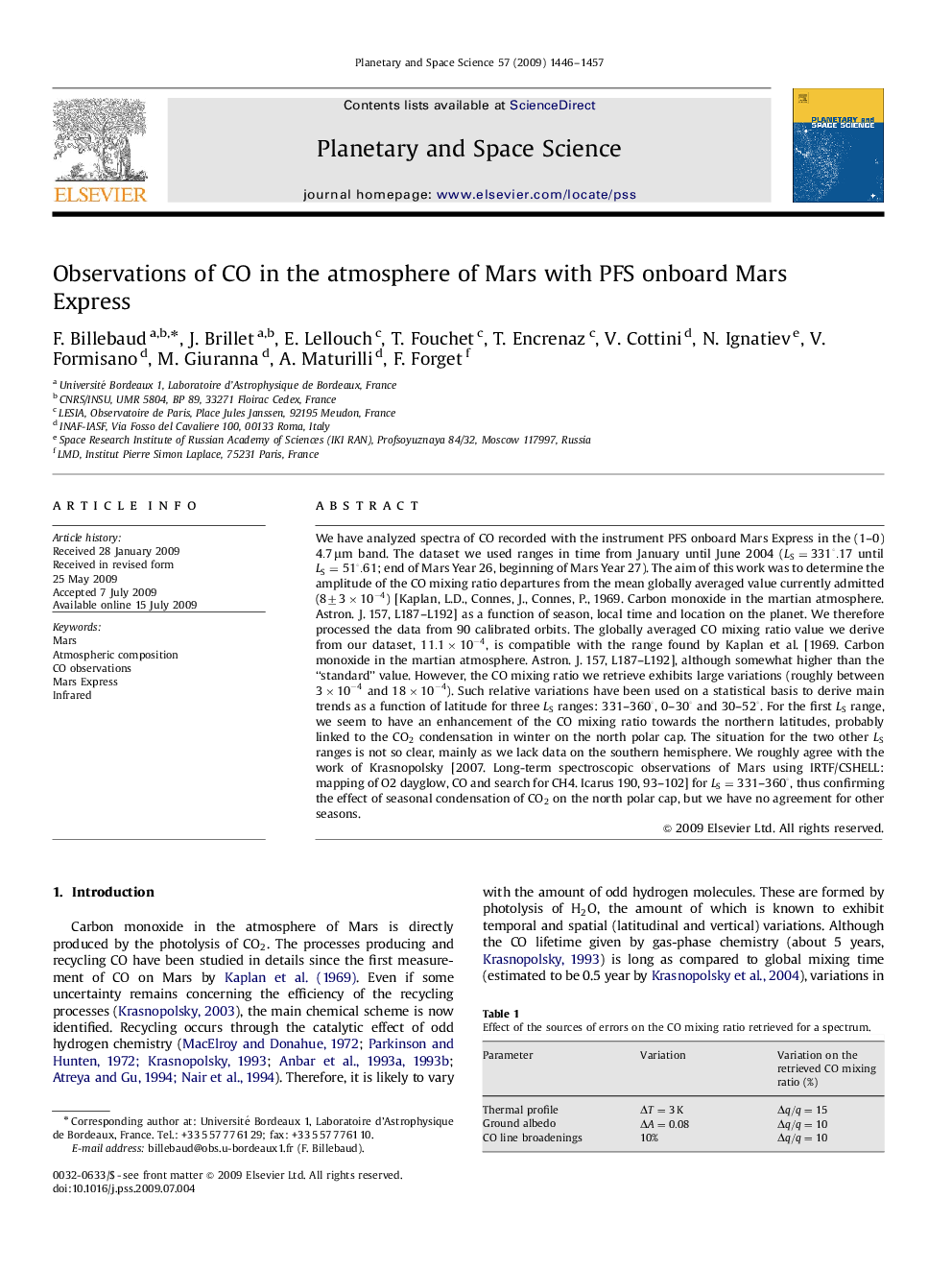| Article ID | Journal | Published Year | Pages | File Type |
|---|---|---|---|---|
| 1782050 | Planetary and Space Science | 2009 | 12 Pages |
Abstract
We have analyzed spectra of CO recorded with the instrument PFS onboard Mars Express in the (1-0) 4.7μm band. The dataset we used ranges in time from January until June 2004 (LS=331â.17 until LS=51â.61; end of Mars Year 26, beginning of Mars Year 27). The aim of this work was to determine the amplitude of the CO mixing ratio departures from the mean globally averaged value currently admitted (8±3Ã10-4) [Kaplan, L.D., Connes, J., Connes, P., 1969. Carbon monoxide in the martian atmosphere. Astron. J. 157, L187-L192] as a function of season, local time and location on the planet. We therefore processed the data from 90 calibrated orbits. The globally averaged CO mixing ratio value we derive from our dataset, 11.1Ã10-4, is compatible with the range found by Kaplan et al. [1969. Carbon monoxide in the martian atmosphere. Astron. J. 157, L187-L192], although somewhat higher than the “standard” value. However, the CO mixing ratio we retrieve exhibits large variations (roughly between 3Ã10-4 and 18Ã10-4). Such relative variations have been used on a statistical basis to derive main trends as a function of latitude for three LS ranges: 331-360â, 0-30â and 30-52â. For the first LS range, we seem to have an enhancement of the CO mixing ratio towards the northern latitudes, probably linked to the CO2 condensation in winter on the north polar cap. The situation for the two other LS ranges is not so clear, mainly as we lack data on the southern hemisphere. We roughly agree with the work of Krasnopolsky [2007. Long-term spectroscopic observations of Mars using IRTF/CSHELL: mapping of O2 dayglow, CO and search for CH4. Icarus 190, 93-102] for LS=331-360â, thus confirming the effect of seasonal condensation of CO2 on the north polar cap, but we have no agreement for other seasons.
Related Topics
Physical Sciences and Engineering
Earth and Planetary Sciences
Geophysics
Authors
F. Billebaud, J. Brillet, E. Lellouch, T. Fouchet, T. Encrenaz, V. Cottini, N. Ignatiev, V. Formisano, M. Giuranna, A. Maturilli, F. Forget,
